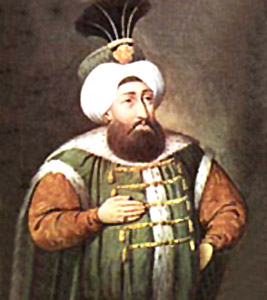 Art of warfare during the Middle Ages was something that was taken up quite solemnly, resting importance on the consciousness of class division. The organisation of armies during the middle ages were generally composed of feudal recruits. During the ninth century, philosopher Vacaspati Misra cited by way of illustration that the levies of heads and chiefs of villages constituted the army of the sarvadhyaksa who may have been their political superior. Sulaiman (c. 851 A.D.) also wrote that the Indian kings had no standing armies and that there was no system of paying standard salaries to soldiers. A model document, contained within the Lekbapaddbati, reveals the common practice of granting villages to rajaputra chiefs on condition of military service with specified numbers of horses and soldiers. It is not unlikely that this system was the forerunner of the mansabdari system of the later Middle Ages. To what extent it was in vogue in the twelfth century may be viewed from the fact that Laksmidhara explains the term des`apati as warriors etc. At that time, the king marched against or was assailed by an enemy, he summoned his vassal chiefs who, along with their forces, joined his army, which thus swelled to enormous proportions. It is also alleged that on the eve of the second battle of Tarain, one hundred fifty tributaries had assembled for the help of Prithviraja Cahamana.
Art of warfare during the Middle Ages was something that was taken up quite solemnly, resting importance on the consciousness of class division. The organisation of armies during the middle ages were generally composed of feudal recruits. During the ninth century, philosopher Vacaspati Misra cited by way of illustration that the levies of heads and chiefs of villages constituted the army of the sarvadhyaksa who may have been their political superior. Sulaiman (c. 851 A.D.) also wrote that the Indian kings had no standing armies and that there was no system of paying standard salaries to soldiers. A model document, contained within the Lekbapaddbati, reveals the common practice of granting villages to rajaputra chiefs on condition of military service with specified numbers of horses and soldiers. It is not unlikely that this system was the forerunner of the mansabdari system of the later Middle Ages. To what extent it was in vogue in the twelfth century may be viewed from the fact that Laksmidhara explains the term des`apati as warriors etc. At that time, the king marched against or was assailed by an enemy, he summoned his vassal chiefs who, along with their forces, joined his army, which thus swelled to enormous proportions. It is also alleged that on the eve of the second battle of Tarain, one hundred fifty tributaries had assembled for the help of Prithviraja Cahamana.
The evidence of the ancient Indian kavyas, like the Vikramankadevacarita, the Naisadhiyacarita and the Dvayasraya, also points out the organisation of armies during middle ages which was prevalent. It unfolds the fact that the royal armies were primarily formed of the forces contributed by vassals and feudatories. The Ras Mala informs that on one occasion king Bhima of Gujarat sent his orders to his samantas and friends in all directions and a vast army assembled from all sides. Concerning warfare during Middle Ages, a word can be mentioned here regarding the position of the earlier constituents of the army. There exists no reference to sreni-bala in the Sukraniti. Thus it appears that it fell into suspension during the later times. The Kiratarjuniya of Vatsaraja suggests that the lofty notion of chivalry had created a tendency against the recruitment of atavika-bala in the royal army. However, a tradition informs that Kumarapala of Gujarat was assisted by forest tribes and mountaineers dressed in deer skin, when he marched against the Cahamana king. Bhrta-bala, i.e. the mercenary was common in this age.
Ancient venerated texts by luminous men have helped much in the regard of art of warfare during Middle Ages and also in understanding the organisation of armies in the middle ages. The Rajatarangim informs that there were occasions in the history of Kashmir when cultivators, artisans and even carters were recruited for the royal army. Maula-bala also finds mention in this age. Out of the fourfold division of army, the chariots had disappeared by the eighth century AD. In the descriptions of armies, neither the Muslims nor the indigenous sources refer to them. But the tradition of chariots as a component part of the army continued in literature. The use of elephants in army in this age has probably been overstressed. The misleading dependence on elephants was one of the major causes of the defeat of the Hindus against the Turks. This dependence was to some extent natural, because elephants were obviously useful in fort warfare, which was quite common in that age.



















